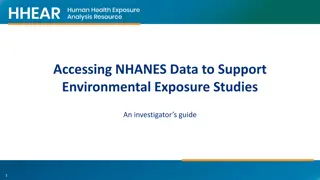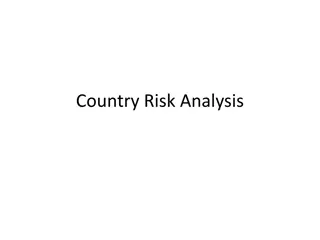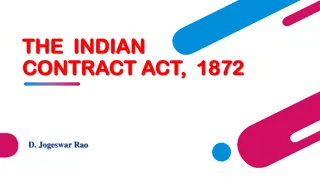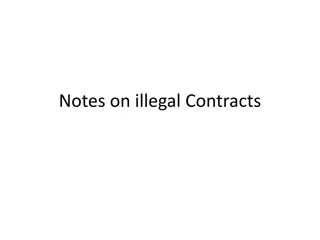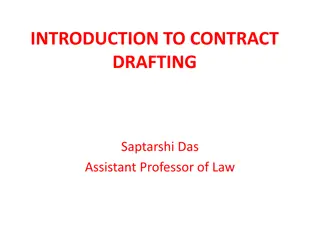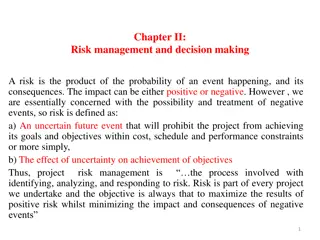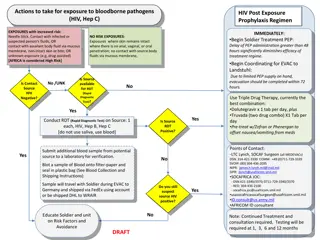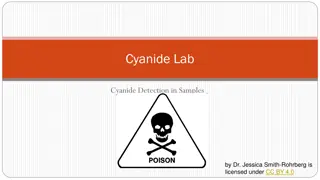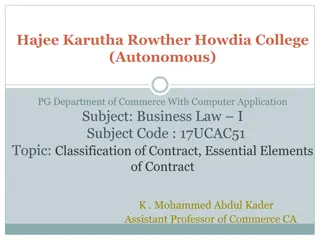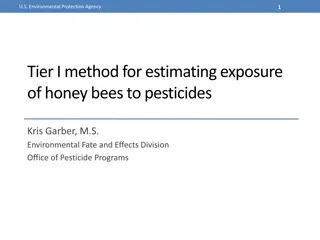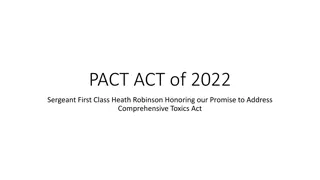Minimizing Risk Exposure in Contracts
This presentation led by Sidney W. Degan, III, focuses on reducing risk exposure through contract provisions such as indemnity and additional insured clauses. It emphasizes the importance of considering anti-indemnity statutes, the role of certificates of insurance, and the implications of dealing with insolvent indemnitors in managing liabilities effectively.
Download Presentation

Please find below an Image/Link to download the presentation.
The content on the website is provided AS IS for your information and personal use only. It may not be sold, licensed, or shared on other websites without obtaining consent from the author.If you encounter any issues during the download, it is possible that the publisher has removed the file from their server.
You are allowed to download the files provided on this website for personal or commercial use, subject to the condition that they are used lawfully. All files are the property of their respective owners.
The content on the website is provided AS IS for your information and personal use only. It may not be sold, licensed, or shared on other websites without obtaining consent from the author.
E N D
Presentation Transcript
MINIMIZINGRISK EXPOSURE Presenter: SIDNEYW. DEGAN, III
Presenter Sidney W. Degan, III Managing Partner WWW.DEGAN.COM 5044-529-3333 NEW ORLEANS BATON ROUGE LAFAYETTE
Contract Provisions Indemnity Additional Insured Independent Contractor Arbitration Applicable State Law Insurance Policy Coverage
Some states have anti-indemnity statutes, which render certain indemnification provisions unenforceable. Anti-indemnity statutes limit indemnification provisions in construction contracts that go against public policy. These statutes serve to prevent indemnitors from being obligated to indemnify an indemnitee for the indemnitee s own wrongdoing. It is essential that these statutes be considered when drafting contractual indemnity provisions, as well as when evaluating potential liability.
Certificates of insurance are not part of the insurance policy. COIs are summaries of insurance coverage, which are issued by an insurer that provide proof of the policy s additional insured endorsement. These should be requested on each policy renewal.
If an indemnitor is insolvent, actions against it will be stayed in bankruptcy court, which is a lengthy process. Ultimate recovery for you may be reduced through bankruptcy proceeding. Ensuring that your indemnitors have insurance is important to avoid this issue.
Gasquet I. Direct Action II. What Is Gasquet?
DirectAction One important difference between Louisiana and other states is that Louisiana law provides for a right of direct action by a third-party claimant against an insurer.
DirectAction Right of action directly against insurers by non- insureds Designed to protect injured third-parties
DirectAction La. R.S. 22:1269 Liability policy; insolvency or bankruptcy of insured and inability to effect service of citation or other process; direct action against insurer A. No policy or contract of liability insurance shall be issued or delivered in this state, unless it contains provisions to the effect that the insolvency or bankruptcy of the insured shall not release the insurer from the payment of damages for injuries sustained or loss occasioned during the existence of the policy, and any judgment which may be rendered against the insured for which the insurer is liable which shall have become executory, shall be deemed prima facie evidence of the insolvency of the insured, and an action may thereafter be maintained within the terms and limits of the policy by the injured person, or his survivors, mentioned in Civil Code Art. 2315.1, or heirs against the insurer. B.(1) The injured person or his survivors or heirs mentioned in Subsection A of this Section, at their option, shall have a right of direct action against the insurer within the terms and limits of the policy; and, such action may be brought against the insurer alone, or against both the insured and insurer jointly and in solido, in the parish in which the accident or injury occurred or in the parish in which an action could be brought against either the insured or the insurer under the general rules of venue prescribed by Code of Civil Procedure Art. 42 only; however, such action may be brought against the insurer alone only when at least one of the following applies: (a) The insured has been adjudged bankrupt by a court of competent jurisdiction or when proceedings to adjudge an insured bankrupt have been commenced before a court of competent jurisdiction. (b) The insured is insolvent. (c) Service of citation or other process cannot be made on the insured. (d) When the cause of action is for damages as a result of an offense or quasi-offense between children and their parents or between married persons. (e) When the insurer is an uninsured motorist carrier. (f) The insured is deceased. (2) This right of direct action shall exist whether or not the policy of insurance sued upon was written or delivered in the state of Louisiana and whether or not such policy contains a provision forbidding such direct action, provided the accident or injury occurred within the state of Louisiana. Nothing contained in this Section shall be construed to affect the provisions of the policy or contract if such provisions are not in violation of the laws of this state. C. It is the intent of this Section that any action brought under the provisions of this Section shall be subject to all of the lawful conditions of the policy or contract and the defenses which could be urged by the insurer to a direct action brought by the insured, provided the terms and conditions of such policy or contract are not in violation of the laws of this state. D. It is also the intent of this Section that all liability policies within their terms and limits are executed for the benefit of all injured persons and their survivors or heirs to whom the insured is liable; and, that it is the purpose of all liability policies to give protection and coverage to all insureds, whether they are named insured or additional insureds under the omnibus clause, for any legal liability the insured may have as or for a tortfeasor within the terms and limits of the policy.
A term of art used to denote a type of release in which a plaintiff settles with and releases a defendant insured and its primary insurer, but reserves his or her right to pursue additional amounts available through the insured s excess insurance policy.
Releases the primary insurer entirely; Releases the insured from all claims which might be recovered from the insured directly; Reserves the claims against the insured only to the extent that collectible coverage is afforded by an excess policy; and Keeps the insured in the case as a nominal defendant while recovery against the excess carrier is pursued.
One of the key features of a Gasquet release is that although the insured remains a nominal defendant , the insured is not personally exposed to any further liability, including any amounts that the plaintiff cannot collect from the excess insurer .
Presenter Sidney W. Degan, III Managing Partner WWW.DEGAN.COM 504-529-3333 NEW ORLEANS BATON ROUGE LAFAYETTE



